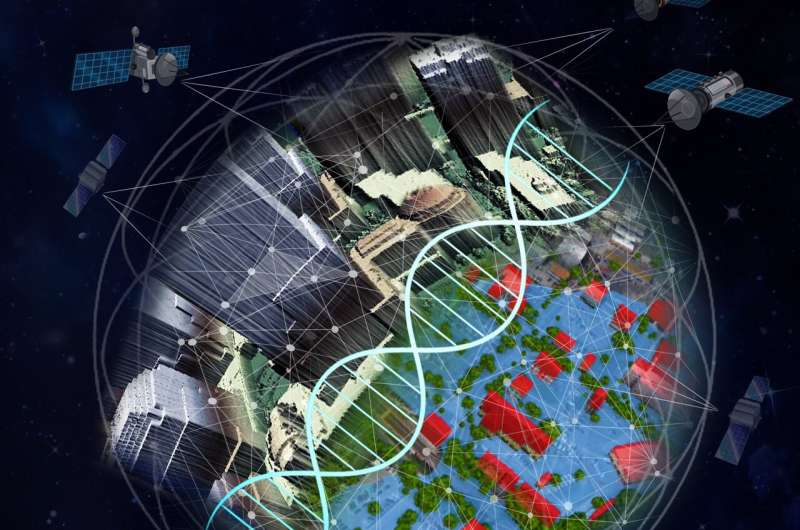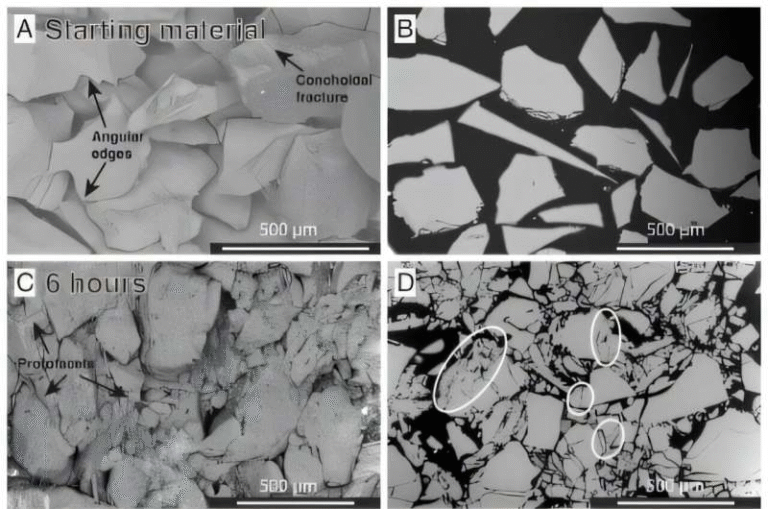New Climate BioStress Model Proposes a Global Sentinel System to Track How Climate Change Impacts All Life on Earth

A team of researchers from the Advanced Science Research Center at the CUNY Graduate Center has introduced a new way of understanding and monitoring how climate change affects living systems across the planet. Their study outlines a comprehensive framework called the Climate BioStress model and a proposed global monitoring network known as the Climate BioStress Sentinel System, or CBS3. Published in Cell Reports Sustainability, this work aims to redefine how scientists, policymakers, and communities detect and respond to the biological consequences of a rapidly changing climate.
What the Climate BioStress Model Is All About
At its core, the Climate BioStress model starts with a simple yet urgent question: How is climate change stressing life across Earth’s many living kingdoms, and can we detect these stresses in a systematic, science-based way?
According to the researchers, the answer is yes. They argue that every organism—from tiny microbes to humans—carries measurable biological stress signatures when exposed to climate-related pressures. These stress signatures appear in various forms, including:
- Genetic changes
- Biochemical reactions
- Physiological responses
- Altered behaviors
- Shifts in ecosystems
Because these signals occur before major ecological or societal breakdowns, identifying them could serve as an early warning system for climate-driven disruptions.
Introducing the Climate BioStress Sentinel System (CBS3)
The proposed CBS3 framework is ambitious. It is envisioned as a global, multi-scale monitoring network capable of integrating biological, environmental, and social data to track climate stress in real time. This includes everything from molecular chemistry to entire ecosystems.
CBS3 draws on advanced technologies such as:
- Genomic sequencing to detect molecular-level stress
- Biochemical assays to identify physiological stress responses
- Remote and onsite sensors to monitor environmental shifts
- Artificial intelligence to interpret massive datasets
- Socio-environmental data to show how stress moves through human systems
- Citizen science tools, including wearable devices and home-installed microsensors
The idea is to create something similar to a “weather report for climate stress”, offering snapshots of how organisms, ecosystems, and societies are responding to climate conditions at any given time.
Why Sentinel Species Are Key to CBS3
A major part of the CBS3 approach involves identifying sentinel organisms—species that react strongly and measurably to environmental stress. These organisms act as natural indicators of ecological health.
Key examples highlighted in the study include:
- Microbes and phytoplankton, which help regulate greenhouse gases and oxygen production
- Amphibians, known for their sensitivity to environmental change
- Corals and trees, whose growth patterns preserve long-term records of climate stress
- Lichens and other symbiotic organisms, which respond quickly to changes in heat and pollution
These species function like biological alarms, revealing stress before changes become catastrophic or irreversible.
Integrating Human-Centered Information
CBS3 isn’t limited to the natural world. The framework also integrates human-focused data, including:
- Governmental records
- Infrastructure performance metrics
- Public health indicators
- Economic and social data
- Even information from social media
The idea is to create a holistic picture of how climate stress impacts not just ecosystems, but also cities, communities, and systems people rely on daily.
This is where the concept aligns with the One Health model—a framework connecting human, animal, and environmental wellness. By blending these data streams, CBS3 could support decision-making around public health, disaster preparedness, biodiversity protection, and climate policy.
How Citizen Science Could Play a Major Role
The authors imagine a future where millions of people contribute data from advanced microsensors placed:
- In homes
- In workplaces
- On clothing
- In mobile devices
Paired with smartphone uploads, this data could create a near-real-time map of biological and environmental stress. This democratized, public participation might make climate monitoring more transparent and inclusive.
Why Developing CBS3 Is a Grand Scientific Challenge
The research team describes CBS3 as a “pan-scientific grand challenge”, and for good reason. The system would have to operate across:
- 12 orders of magnitude in space and time
- Molecular biology
- Organism-level responses
- Ecosystem dynamics
- Planetary climate patterns
- Human-centered infrastructures
Despite the scale, the authors argue that today’s technology makes early-stage deployment feasible.
Why Climate Adaptation Alone Isn’t Enough
One of the study’s strongest messages is that adaptation strategies focused solely on human systems will fall short. Climate stress affects all levels of the biosphere—plants, animals, microbes, water systems, soils, and people. Without a unified monitoring approach, policymakers risk addressing symptoms rather than causes.
CBS3, the researchers argue, could bridge this gap by offering early detection of climate-driven stress and helping guide data-driven mitigation strategies.
Additional Context: Why Monitoring Biological Stress Matters
The concept of biological stress caused by environmental change isn’t new, but scaling it up to the global level is.
Here are a few broader insights related to the topic:
1. Biological Stress Signals Often Appear Before Ecosystem Collapse
Living organisms typically react to stress—through biochemical or physiological changes—long before ecosystems visibly degrade. By catching these early signals, societies can take preventive action instead of dealing with expensive and irreversible consequences.
2. Sentinel Species Have Been Used for Decades
Historically, species like canaries in coal mines, frogs in freshwater systems, and lichens on tree bark have helped detect harmful changes in ecosystems. CBS3 expands this idea globally, making use of advanced molecular tools and digital technologies.
3. Urban Areas Are Critical Monitoring Zones
Cities—dense, complex, and vulnerable—are both major contributors to climate change and major victims of its impacts. Monitoring biological stress in cities could improve:
- Urban planning
- Climate resilience strategies
- Public health systems
Because CBS3 integrates social and biological data, it is well-suited for urban environments.
4. Genetic Monitoring Is Becoming More Accessible
Advances in DNA sequencing mean researchers can identify stress-related gene expression changes more quickly and cheaply than ever before. This has opened new doors for monitoring everything from coral bleaching to crop resilience.
5. Citizen Science Is Transforming Environmental Research
Low-cost sensors and smartphone apps allow people around the world to collect environmental data. CBS3’s vision fits naturally into this trend, potentially turning millions of people into contributors to global climate monitoring efforts.
Final Thoughts
The Climate BioStress model and the CBS3 framework provide a compelling, scientifically grounded vision for the future of climate monitoring. By using biological stress signals as early warnings—and integrating them with human and environmental data—this system could give researchers and policymakers a powerful new tool to understand and respond to accelerating climate change.
As climate pressures deepen worldwide, approaches like CBS3 may become essential for guiding effective climate adaptation and mitigation strategies.
Research Reference:
A Climate BioStress Sentinel System (CBS3): Identifying Climate Impacts from the Genome to Urbanized Biosphere
https://www.cell.com/cell-reports-sustainability/fulltext/S2949-7906(25)00254-X





